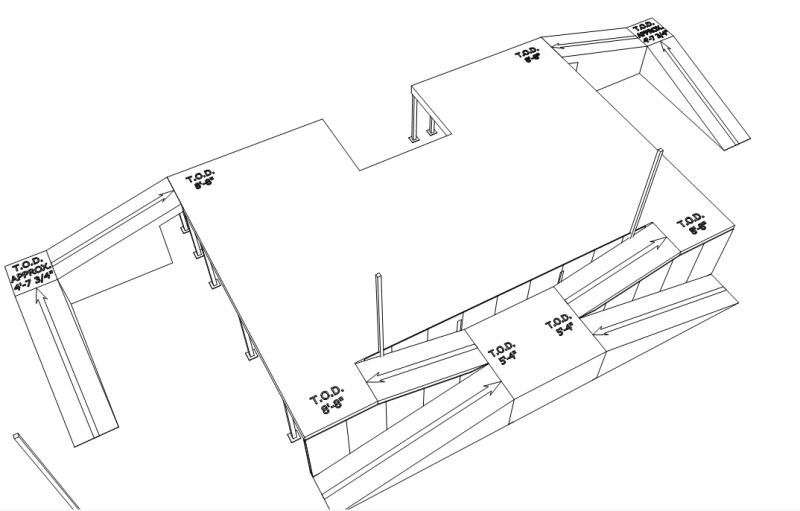YoungGunner
Structural
- Sep 8, 2020
- 98
Client wants us to engineer an elevated platform for a lazer tag arena. The floor will be W-shapes with steel decking and plywood sheathing on top and HSS columns supporting. The existing slab is 6" thick, unsure if it is reinforced. I'm trying to limit the number of columns used in the LFRS to avoid cutting out the slab and pour spot footings. However, preliminary design is revealing that that R=1.25 is requiring massive footings. I'm looking for insight if there are a few ways of helping the situation, and also asking for clarification on some design aspects.
1) Another LFRS system I could explore outside of ordinary cantilever columns?
2) This will have obstacles built on it - do I need to include that as dead load in seismic weight if those obstacles aren't designed to resist seismic forces? We are designing the platform for 100psf, more than plenty to handle vertical weight. Follow up to that - do I need to design whatever they put on top to not fall over?
3) Any good thoughts on resisting the overturning moment at the base? Currently getting spot footings 78" wide NOT including partition dead load. Moment is on the magnitude of 18kip-ft ASD.

1) Another LFRS system I could explore outside of ordinary cantilever columns?
2) This will have obstacles built on it - do I need to include that as dead load in seismic weight if those obstacles aren't designed to resist seismic forces? We are designing the platform for 100psf, more than plenty to handle vertical weight. Follow up to that - do I need to design whatever they put on top to not fall over?
3) Any good thoughts on resisting the overturning moment at the base? Currently getting spot footings 78" wide NOT including partition dead load. Moment is on the magnitude of 18kip-ft ASD.

